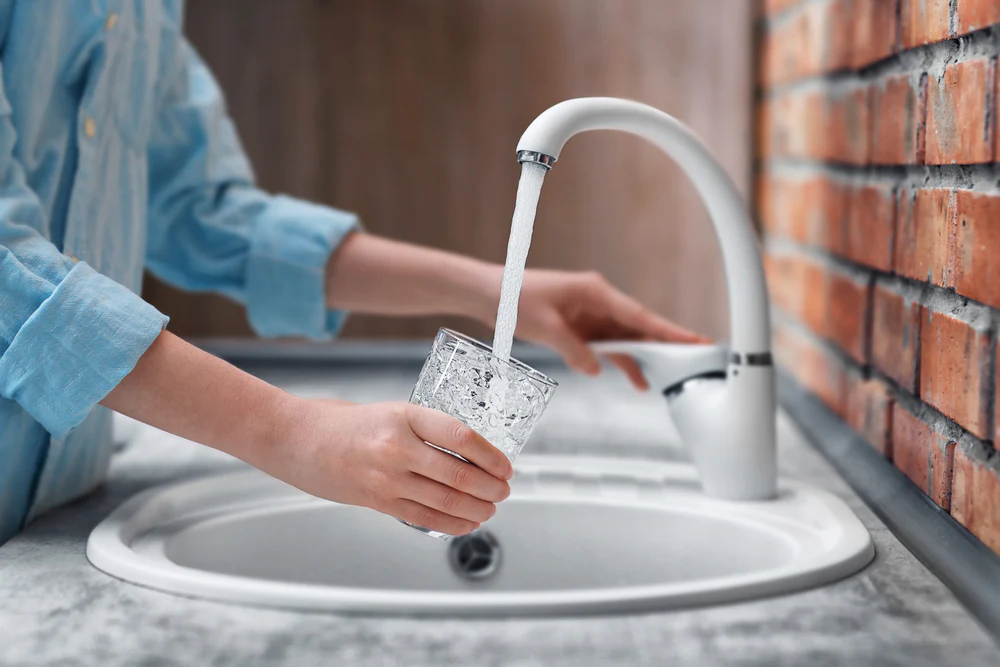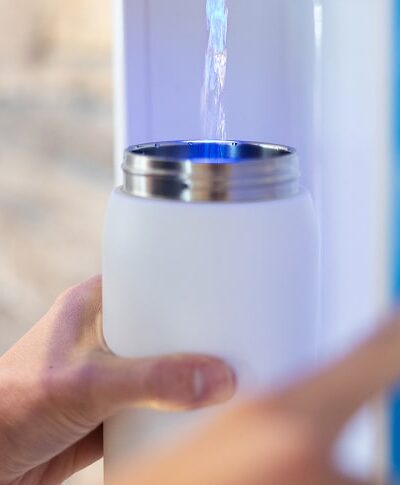Water is such an essential part of our daily lives that many times we don’t stop to consider where it’s being sourced or the quality of it. We assume we’re receiving the best possible output. For many, tap water is deemed undrinkable, which is where filtered water comes into play. The importance of water filtration is that it gives people access to water that is free of contaminants, that tastes good, and is a reliable source of hydration. Without it, there’s the risk of becoming ill from tap water or the alternative of drinking other beverages that may not be as good for your health as purified water.
There are different types of filtered water but all offer the basics of the water purification process. This involves water that has been strained of chemicals, pesticides, bacteria, and other particles that contaminate the water. Although public water systems have filtration protocols in place, these vary from state to state. It depends on where your water supply is sourced from originally, the way it is treated, and the quality of water pipes. For example, older water filtration systems that use lead pipes may be harmful to the final dispersal of water because of lead leaching from the pipes into the water.
The main importance of water filtration is to prevent water-related illnesses and diseases. Infants, elderly adults, and people with poor immune systems are more highly susceptible to experiencing adverse effects due to polluted tap water. According to the Centers for Disease Control and Prevention, some of the top causes of outbreaks in public water systems include:
- Copper
- Salmonella
- Hepatitis A
- E. coli
- Norovirus
Any of these contaminants can lead to health problems such as kidney and respiratory issues, reproductive challenges, and cancer. A polluted water supply can also be harmful to your skin and hair. Lastly, depending on the quality of water, certain values may be outside of the U.S. Environmental Protection Agency (EPA) recommended pH level. When this occurs, it leads to a chance of an increased measure of corrosivity that dissolves metal it comes into contact with and eventually becomes part of the water. Suffice it to say, the chance of drinking water that hasn’t been filtered isn’t a chance that many people want to take.
Filtered Water Solutions That Remove Contamination
Fortunately, there are several ways people can get filtered water. A water filter has microscopic holes that remove sediment and pollutants from the water. The smaller the holes, the less it allows to pass through and the cleaner the water is. The way each type of water filtration system works is slightly different. The most common options are bottled water, at-home filters, reverse osmosis units, and alkaline water.
Bottled Water
Billions of gallons of bottled water are sold yearly as demand for it continues to increase. Although perceived as an inexpensive, convenient filtered water option, it is more costly in the long run than other filtered water choices. The price of bottled water is nearly 2,000 times the cost of tap water and has vastly increased the amount of plastic waste affecting our environment.
Fortunately, many have begun to shift toward using reusable water bottles as an alternative. Having a filtered water supply readily available for use is a key factor in helping to reduce the amount of plastic waste filling up the landfills and oceans. People want water that tastes great and can be found conveniently at places where they frequent most often.
Filter Faucet Attachments and Pitchers
These types of filters are easily obtained and are effective in improving the taste of tap water. They help to reduce lead and solids by using a filter screen to capture small particles. In some cases, these types of filtration solutions use a block of activated carbon that helps to remove unpleasant odors and tastes that might be present in your water.
When using either of these at-home options, it’s important to change the filter on a regularly scheduled basis. Failure to do so causes build up in the filters and the water that passes through may not be as clean as desired. Also, when it comes to the availability of filtered water using pitchers, they constantly need to be refilled and there is a period of waiting time until purified drinking water is available again. This is an inconvenience when using in larger households or in organizations where a large group of people is relying on a consistent source of filtered water.
Reverse Osmosis Units
Reverse osmosis forces water through a semipermeable membrane using pressure. It ensures that the smallest of particles and chemicals cannot pass through, which leaves behind the purest of water. This filtration process can take a few hours to deliver a couple of gallons, which also can prove to be inconvenient. Additionally, the water used is approximately three times as much as what is treated and suitable to drink. It may remove more contaminants than the average filter, but its efficiency is lacking.
For those who want to make sure their water is wholly free of toxins, this could be a valuable option. However, since it does such a good job of straining out all particles, it means any healthy minerals naturally found in tap water are often left behind as well. You get a pure water experience but compromise losing other benefits along the way.
Alkaline Alternatives
Alkaline water has a higher pH level than typical tap water which helps to neutralize its acidity and effect on the body. There are DIY ways to make alkaline water, but the most common way is using a water ionizer. The purpose of this water treatment system is to raise its number on the pH scale.
A water ionizer uses electricity to separate water molecules into alkaline and acidic, keeping the former and removing the latter. People who suffer from acid reflux or want to reduce the acidity in their diet have found this type of water to be beneficial. However, health claims still lack solid scientific evidence that it works to improve health.
FloWater Advanced Filtration Stations
The technology of FloWater’s electric water delivery system tackles the importance of water filtration from several angles. It captures solids, bacteria, and other microscopic organisms from the water and filters them out. It also focuses on removing lingering odors and unpleasant tastes from tap water. Although these two filters work similarly to at-home filters, it captures up to 99% of contaminants and is only two parts to a seven-step process.
The system also relies on an advanced osmosis filter to achieve the purest water possible. Plus, it neutralizes the water’s pH level through an alkaline enhancement filter. From there, it adds healthy components back to the water in the form of electrolytes and traces of essential minerals.
The process is then finished with a coconut carbon filter to remove any last odors or tastes to deliver a crisp, delicious finish. This extensive filtration process combines the filtered water benefits of other water treatments, adds to it, and provides it in one ready-to-go system.
What to Consider When Choosing a Water Filtration System
The majority of people drink some type of filtered water. It’s best to consider all the factors when deciding which will work best for you. First is the performance. How well does the filter work? What percentage of chemicals and particles does it remove? Does it add anything back to the water to boost its quality? Not all solutions deliver the same level of water purification.
The second thing to consider is the maintenance involved. How often do you have to change filters? Are there any other components that require attention on a regular basis to achieve safe drinking water? With at-home pitchers or faucets, the filters can become clogged after filtering a certain amount of water, which then deems them ineffective. It requires diligence and a continual cost to change out these filters on a constant basis.
The low-maintenance aspect of the FloWater Refill Station serves as another benefit that other choices don’t have. The setup is performed by a certified technician and the design has chemical-free, self-sanitizing features, such as a powerful drain pump and hidden catchment tray, to limit the amount of ongoing maintenance needed. The majority of customers who use the stations only require a filter change once per year. Third, of course, is the quality of the water itself. How does the water taste? How convenient is the system to use? The goal is to have the best-tasting water chilled to the perfect temperature available at all times. When servicing larger crowds in work environments, gyms, or other public areas, speediness is a factor and doesn’t have to come at the sake of taste. FloWater stations chill water to a crisp 42° and have a fast auto-replenishment feature that takes 9 seconds to dispense into a 24-oz. bottle. It hits all the marks: cool, quick, and convenient.
Filtered Water at Its Finest
The importance of water filtration spans across all industries and households. Everyone wants cool, crisp water without the fear of contamination in their water. FloWater provides a convenient, environmentally-friendly solution to filtering water. It also adds back electrolytes and neutralizes the water for a well-rounded, high-quality product.
It’s no secret that staying hydrated is essential to everyday health. The better the quality, the more it encourages people to drink more water on a regular basis. It’s also important that the source of purified water is readily available on-demand. With so many options of filtered water available, focus on the one that meets the full range of what people want. You can control the quality of water by using a filtration system that delivers on all levels.
Sources:
https://www.businessinsider.com/bottled-water-costs-2000x-more-than-tap-2013-7
https://www.cdc.gov/healthywater/drinking/public/water_diseases.html
https://www.cnn.com/2019/01/29/health/alkaline-water-benefits-explainer/index.html




